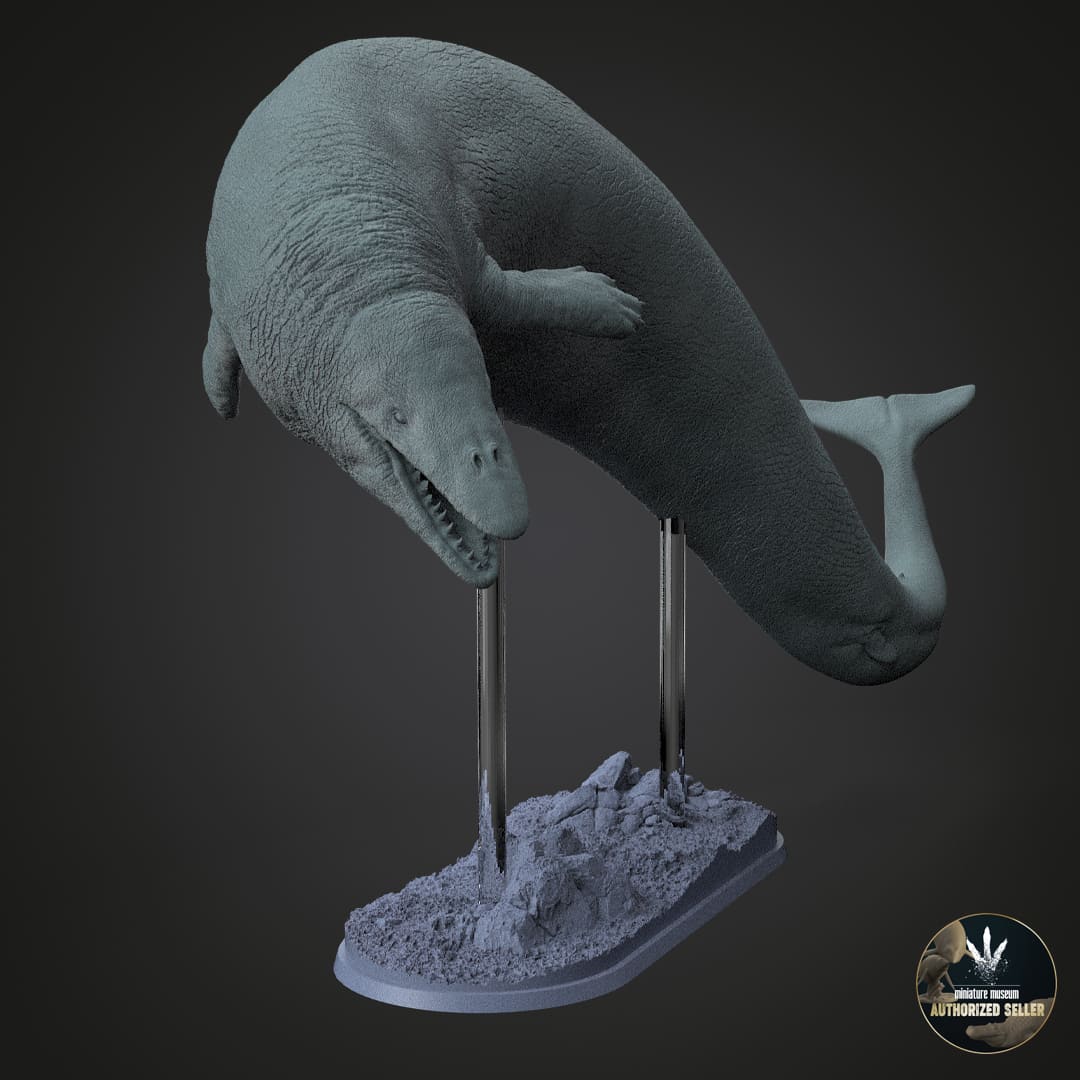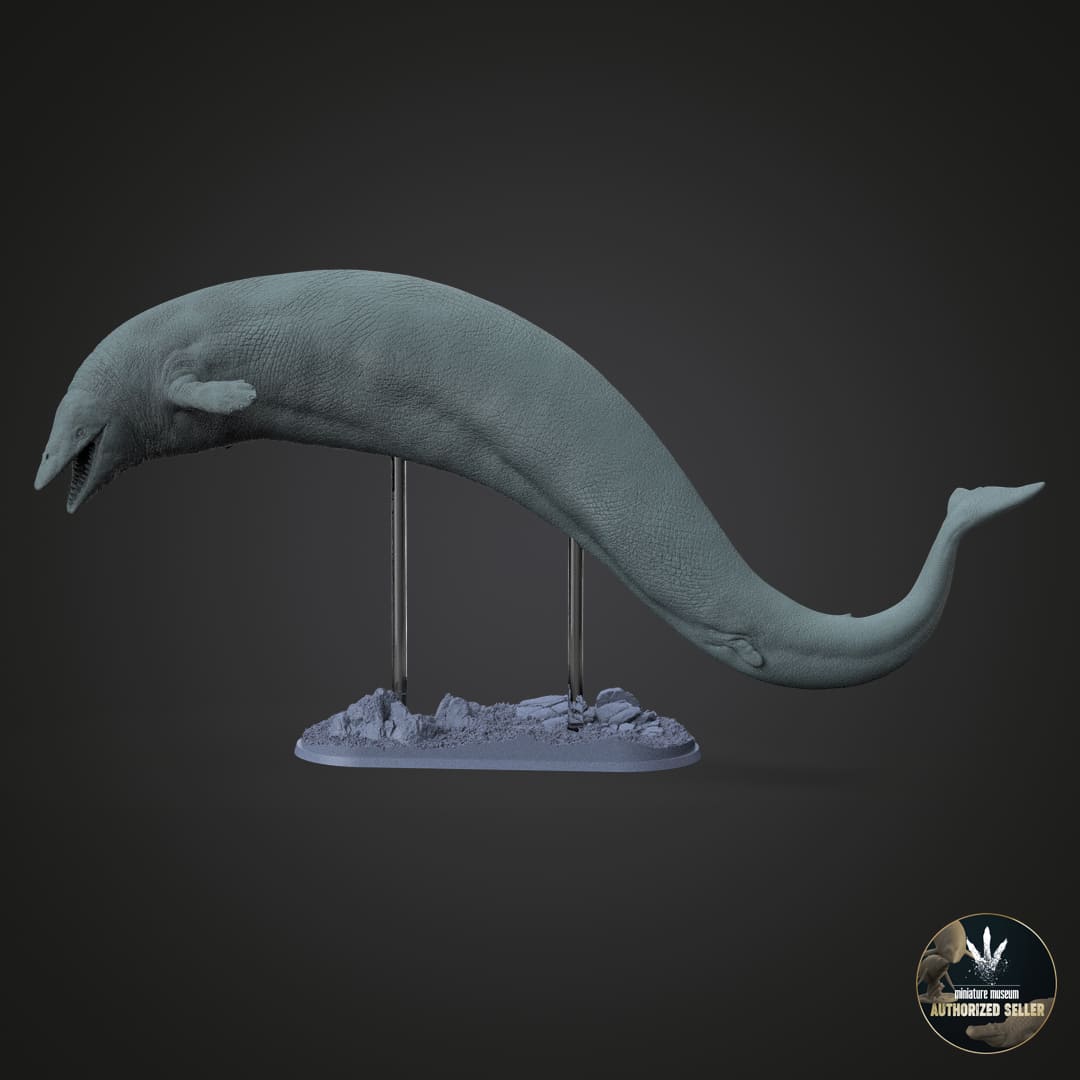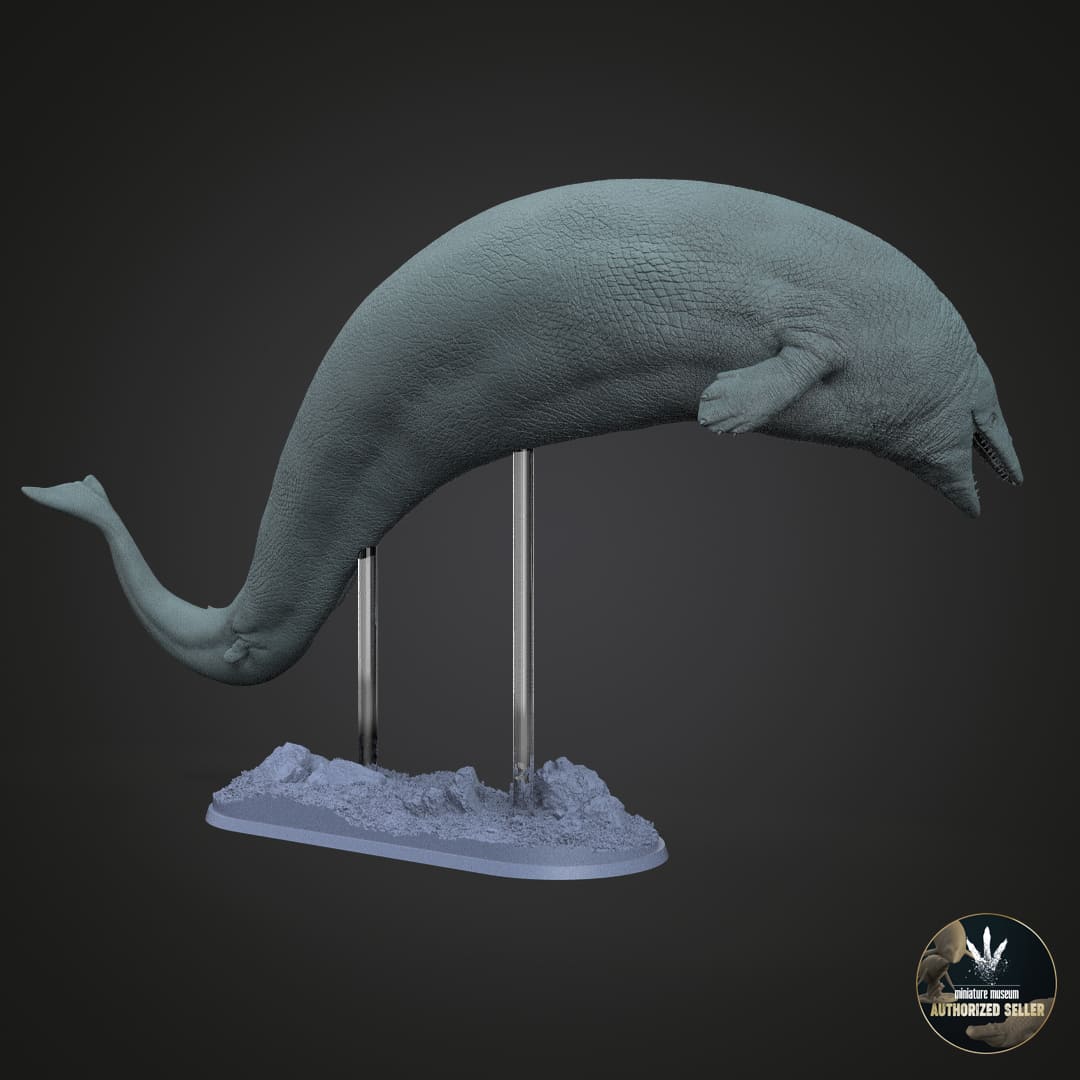



Basilosaurus cetoides
Do you want another scale?
Contact us and we will make it possible!
How will you receive your replica?
In the unprimed and primed variants, you will receive the complete replicas except for the large models, where you will receive an assembly kit.
In the hand-painted variant, the replicas will be delivered complete.
How does the painting service work?
We created a private chat for you where you will have direct communication with our painter , being able to choose your preferred color schemes and follow the hand painting process closely.
Pairs well with

Basilosaurus cetoides
If you have any questions, you are always welcome to contact us. We'll get back to you as soon as possible, within 24 hours on weekdays.
Shipping Information
Visit our shipping policy page to find all the information.
Customer Support
Give us a few details and we’ll offer the best solution. Connect by chat or email.
We are available 24/7.
FAQ’s
Visit our FAQ's page to find answers to common questions.
Contact Us
We'd love to hear from you. We are here to help. Visit our contact page to send us a message.
Product details
The body of Basilosaurus cetoides was extremely long and slender, with a structure that made it look like a mix between a modern cetacean and a sea snake due to its serpentine shape. Its head was large and elongated, with a snout full of sharp teeth of different sizes, indicating that it was an active predator that hunted fish, sharks and possibly other smaller cetaceans. Unlike modern cetaceans, Basilosaurus did not have sophisticated echolocation, suggesting that it relied more on sight and smell to find prey.
Its hind limbs were vestigial, meaning extremely reduced and not functional for locomotion, revealing its evolution from terrestrial mammals. These small hind legs had no use for swimming, but were probably used during mating. In contrast, its elongated body was well adapted for swimming, propelling itself primarily with its tail, which had a caudal fin like that of modern cetaceans.
Basilosaurus cetoides lived in warm, shallow seas, which today correspond to areas including the Gulf of Mexico and part of the Atlantic. This cetacean is especially known from the numerous fossils discovered in Alabama, Louisiana, and other areas of the United States.
Basilosaurus cetoides represents an important link in cetacean evolution, showing a clear transition between ancient terrestrial mammals and modern, fully aquatic cetaceans. Although its body had some primitive adaptations, such as its flexible spine and vestigial legs, it was perfectly adapted to marine life and was one of the most fearsome predators in its ecosystem. This Eocene giant has been key to understanding the evolution of marine mammals and their total adaptation to the aquatic environment.
Approximate measurements of Basilosaurus:
- Complete 1:100 scale
- Length 140 mm
- Height 61 mm
- Width 36 mm
- Snout-tail length 190 mm
- Complete 1:50 scale
- Length 280 mm
- Height 121 mm
- Width 72 mm
- Snout-tail length 380 mm
Information about aftershocks
Collector's item ; Hyper-realistic replica, highly detailed and with a high degree of scientific precision.
Made to scale, prototyped in resin and with a scenic base in most of the models offered. If you like miniatures, both for collecting and for painting, we offer you a wide variety of scale replicas; All of them related to dinosaurs, extinct prehistoric fauna and current fauna.
So if you love dinosaurs and animals as much as we do, this is your favorite store to collect and paint them :)
We are authorized distributors of all the replicas and figures we offer. We use 3D printers with 8K - 14K resolution, and high-quality resins with additives to improve hardness and flexibility, thus offering replicas of impeccable quality.
Different scales will be used to make the replicas (depending on the size of the species), although we are open to making other suggested scales upon request as long as they fit in our printing trays, for which you will have to contact us via email and request the required size.
Replicas are supplied with the option of airbrush priming in dark grey. If you require another colour, please let us know which one you prefer in the box with special instructions for the seller. Without priming, we do not guarantee that the resin will accept paint.
We also offer the option of choosing a professionally painted replica, which is agreed upon throughout its development with the painter, through a private chat available.
Complete replica (one piece): We supply complete replicas in those models that are small, and models that are medium, large or not very bulky, will have the prerogative of being presented as a complete replica or assembly kit as the case may be.
Complete replicas will be supplied separately from their base.
Replica assembly kit: We supply replicas whose models are large, very large or bulky, only with this option.
The indicated replicas (generally composed of base, head, body and tail) will come prepared for the subsequent assembly that will be required by the client, by sanding, putty, adhesive or technique chosen by the client.
All replicas are thoroughly inspected before shipping and will be carefully packaged to prevent damage during transport.
Information about the models
The poses of the models aim to represent each character in the most scientifically viable way, thus revealing the life and customs of prehistoric and modern fauna.
Each character has its own personality and develops in different life scenarios; birth, adolescence and play, hunting, feeding, fighting, courtship, death and many other scenes from their daily life, always from the creative perspective of their designers.
Handmade
All orders are individually prepared on the cutter for subsequent prototyping, obtaining a resin part that will require post-processing by manual and ultrasonic cleaning, support removal, ultraviolet curing, labeling and packaging.

We are authorized distributors
We offer both our own physical replicas and those that have been modeled by many of the best 3D designers, in order to offer you the greatest possible variety.
Frequently Asked Questions
If you have any questions about products, orders or shipping, please read our FAQ page to learn more.

